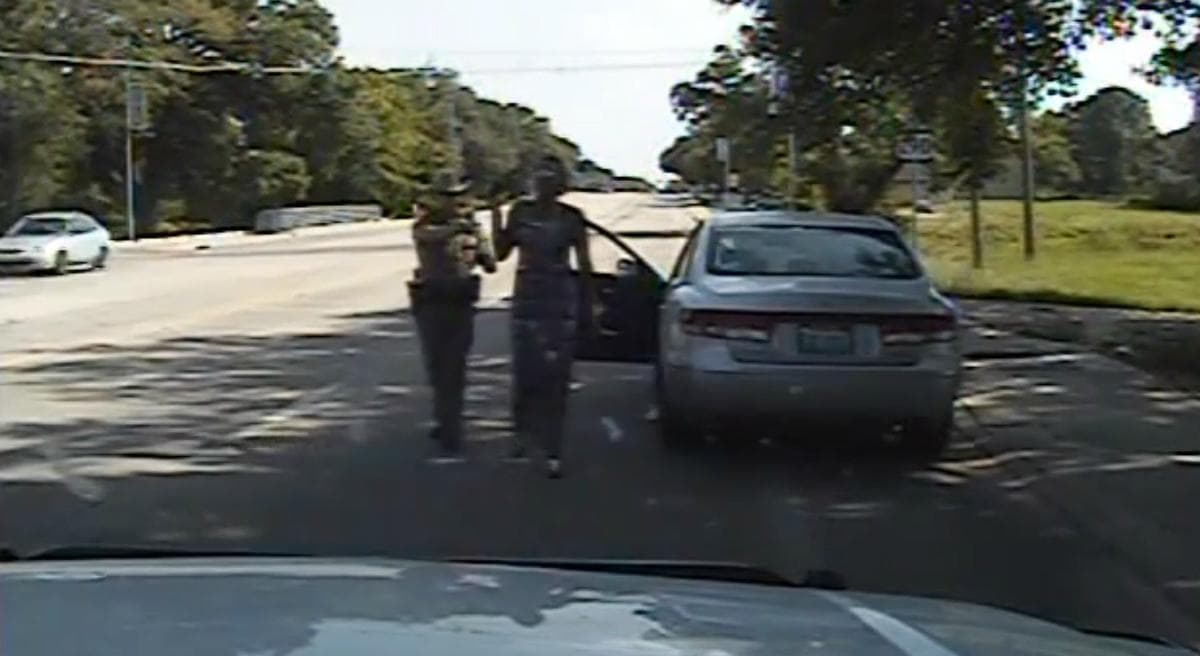Advertisement
What We Can Learn From Sandra Bland’s Tragic End

In 1962 Fannie Lou Hamer and a group of Ruleville, Mississippi residents she had taken to register to vote were returning home when they were stopped because their bus was yellow, and state laws prohibited non-school buses from using that shade. The driver was taken to jail and the would-be voters left in the sweltering “illegal” bus.
We've come a long way since 1962. But for people of color, the roads are still not entirely safe.
Whether Sandra Bland died by her own hand, as Texas authorities state, or by the hand of another, her promising life was cut short because of criminal justice practices that routinely place too many Americans outside of the orbit of due process. Now is the time to pay close attention to the visceral rage her death has educed, and it is also time to take a hard look at the elements in that perfect and fatal storm.
We've come a long way since 1962. But for people of color, the roads are still not entirely safe.
Had Bland been a white woman she would likely be alive today. That wearied truth is widely accepted by those who have been even casually following the astounding accumulation of homicides at the hands of police, and it is a frustratingly simple and damning reality — one that has, thank goodness, resuscitated the long civil rights movement and drawn out of their post-racial lethargy a new generation of protesting artists, activists and students.
Those of a certain age will recall that as civil rights workers, our lives were in jeopardy and our hearts in our bellies whenever we traveled along the country’s treacherous southern roads, and most people know, as was much debated and ultimately well-established about a decade ago, that the risks of driving while different, anywhere in the country, are potent.
Hence the Bland case, at once familiar and quite different from its forebears, should be studied to determine the exact nature of the institutional, incidental and individual factors that led to her death. As anyone who has avoided a speed trap knows, traffic stops serve the dual purpose of keeping the roads safe and raising revenue for other public services — goals that live uncomfortably together. The Supreme Court has twice condemned systems where income-generating policing corrupted due process. In a 1972 case, the Court ruled unconstitutional a regime whereby the mayor of a small Ohio town was also its chief financial officer and the judge of its traffic cases. And in 1927, the Court struck down a case where the judge’s salary was collected from the fines he imposed.

Although more attenuated, due process is likewise implicated when traffic enforcers are rewarded for “productivity.” Although its state law forbids “ticket quotas,” Texas state troopers are evaluated in part based on their numbers. The institutional practice of tying a police officer’s career advancement to a quantitative measure that may undermine fair and just results is inherently problematic, but it becomes downright combustible when coupled with racial decision-making. The Department of Justice found as much in Ferguson.
In its March 2015 report, the Department found that African Americans bore the brunt of a policing and law enforcement system that was aimed at generating city revenues. The practices “reflect and exacerbate existing racial bias, including racial stereotypes,” leading law enforcement officers to view black residents as “sources of revenue” rather than as constituents entitled to fair process and public safety, the Department observed. While Waller County, where Bland died, has not been as closely studied, it is fair to assume that the pattern in St. Louis County may also be typical of many small multiracial counties elsewhere.
Race-specific incidental factors also illuminate the interaction between Bland and the trooper. Police make instantaneous calculations about who to stop and who to arrest, and the traffic codes give them hundreds of reasons (or pretexts) to justify a stop. Solid research shows that people of color, in Texas as elsewhere, are unjustifiably and disproportionately stopped. But the most telling data reveals that non-whites are more likely to be ordered out of their vehicles and subject to search. And further, they are less likely than whites whose vehicles are searched to be found in possession of criminal material. Race, then, is a salient factor in transforming a discretionary stop into a “probable cause” creating incident.
Even if her race, combined with her foreign plate, were not causal factors in the initial stop of Bland, her race, together with her assertiveness, manifestly led to her felony arrest on the bogus charge of assault, the excessive bail, and her ultimate death.
Police make instantaneous calculations about who to stop and who to arrest, and the traffic codes give them hundreds of reasons (or pretexts) to justify a stop.
Finally, this individual police officer appears to have been unwilling to de-escalate the encounter. Was he was poorly trained, or irritated, or did he just dislike black women? It’s hard to say. But it almost doesn’t matter if we cannot control the institutional factors that create a breeding ground for race-inflected discretionary decision-making. That is the real value of the DOJ’s Ferguson report, which demonstrates the extractive dynamic of a criminal justice system that, for other reasons, has been likened to slavery.
The Supreme Court has steadfastly refused to place criminal justice results in the context of systemic practices: it famously declared that the Constitution had no means of disciplining a Georgia death penalty system that disproportionately selected blacks for execution.
Refreshingly, this past term, in the case Rodriguez v. United States the Court recognized a fourth amendment limit on police searches in a highway traffic stop. But before Rodriguez the Court’s steady degradation of the fourth amendment created a mack truck-sized hole through which racial bias could insinuate itself, defy discovery and leave people of color overexposed on the roads.
